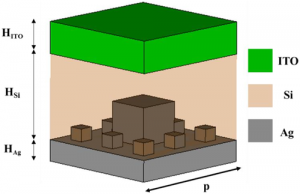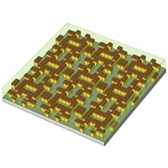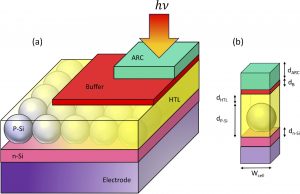Abstract
In this article, a new structure for development of thin film solar cells is proposed in which elements with fractal shapes are integrated inside the cell to enhance its performance in a wide range of wavelengths. Two different structures are studied. In the first structure, a metallic fractal nano-carpet is integrated inside the silicon layer in order to trap and absorb sunlight by exciting surface plasmon polaritons and local surface plasmons at different wavelengths. Numerical analysis shows that this technique increases the short circuit current provided by the cell by a factor of 2.40 for both TM and TE polarisations of the incident light. The second structure has an active layer shaped as a fractal structure, and absorbs sunlight through Mie and Fabry-Perot resonances occurring at different wavelengths. The short circuit current enhancement for this structure is 2.97 for both TM and TE polarisations of the incident light, representing a significant improvement when compared with the previous works.

link:
https://ietresearch.onlinelibrary.wiley.com/doi/full/10.1049/ote2.12036

